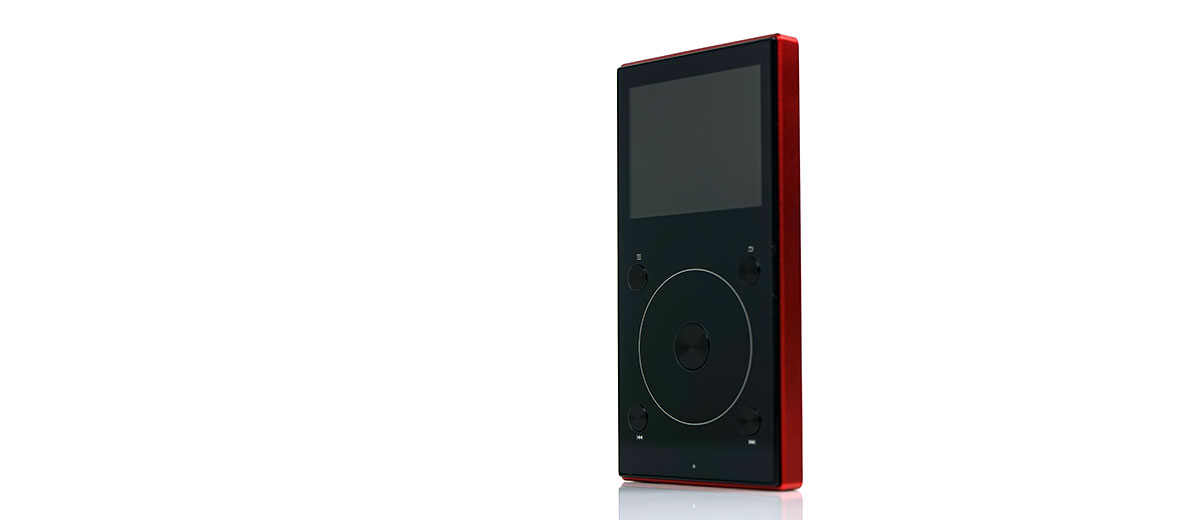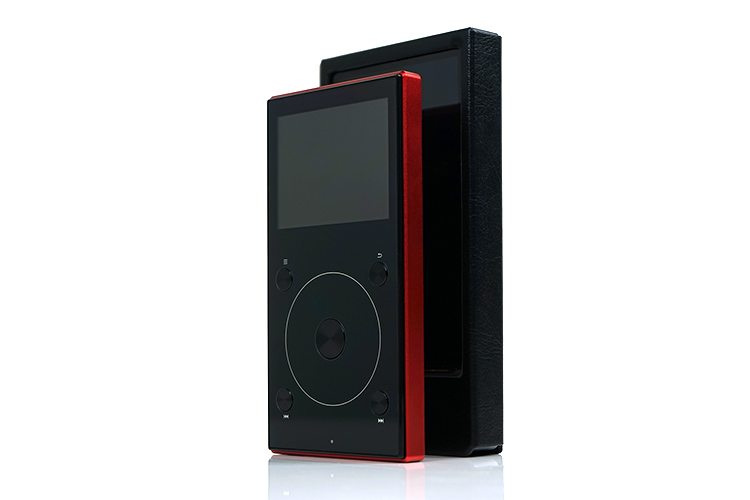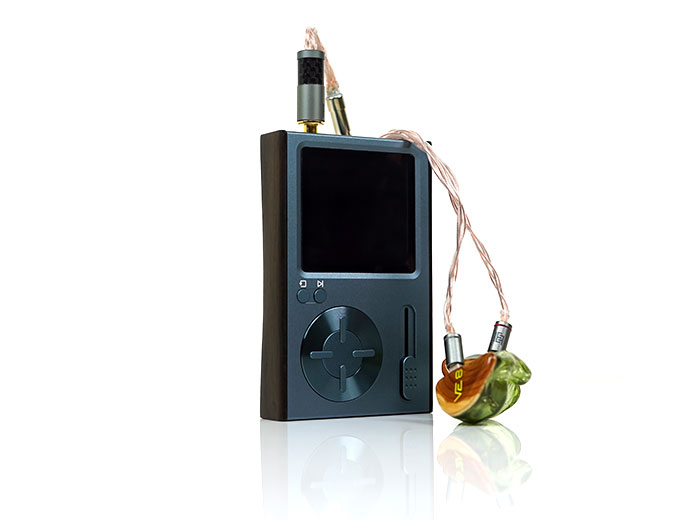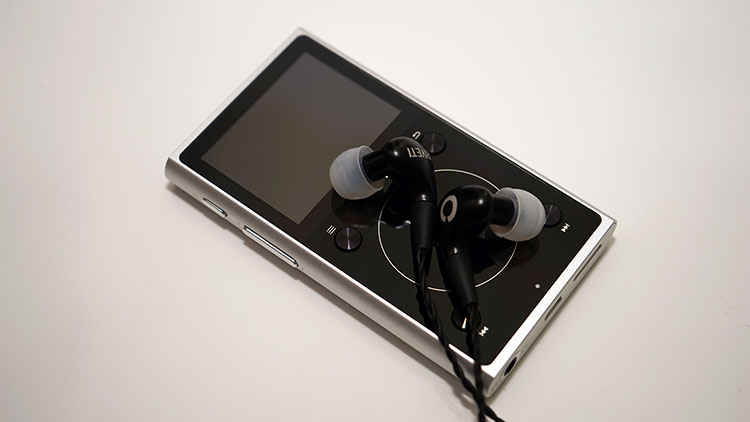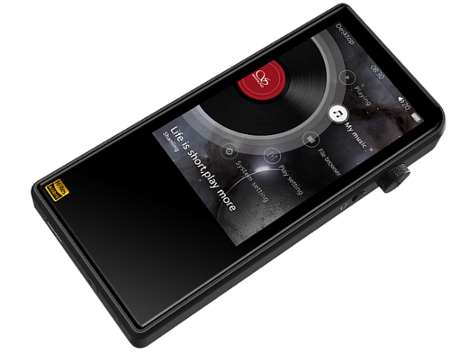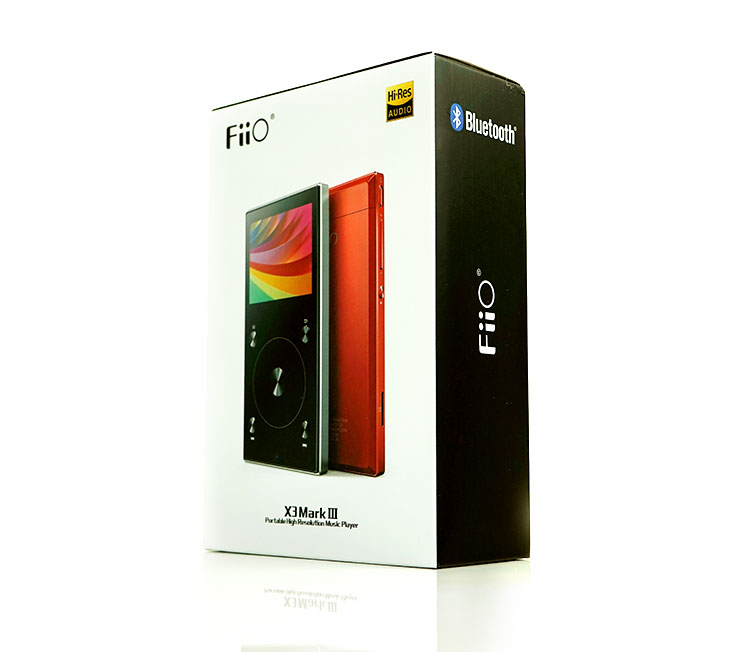Sound Impressions
Tonality & Presentation
In some ways, I find the tonality and presentation of the X3iii a slight return to the original X3 only just that more resolving and refined sounding.
I always found the X3ii to be the drier and the more neutral of the two with a balanced, lean and clean presentation though with a bit more single-ended power. The X3iii is a fuller, rich sounding presentation with a more planted low end and a stronger even harmonic bias in its timbre. Simply put it is much smoother but more dynamic sounding than the older X3ii.
In my X2ii review, I mentioned how the X3ii lost a bit of the original’s lusher timbre and top-tapping PRaT. In some ways, the X3iii has brought back that richer warmer timbre but retained and improved on the clarity of the X3ii’s presentation. It also massively upped the resolution over the X1 2nd gen. I found the X1 2nd gen to be well balanced for the budget DAP but compared to the X3iii you can immediately pick out the superior detail and layering the X3iii can deliver.
I find that the biggest presentational emphasis of the X3iii is in its low-end and vocal presence with a slight lower treble emphasis but not as dominant as, say, the M3s. It does push out vocals a bit more than the X1 2nd gen for sure and its planted warmer bass response will stand out a lot more than previous iterations.
Bass
Heavier hitting than previous generations of the X3 but also tighter sounding. It takes the fullness of the first gen X3 but pushes it a bit further forward than the 2nd generation. The 2nd Gen will sound a bit leaner in comparison and more neutral in positioning.
Compared to the likes of the M2s it is also much better defined and not quite as warm sounding as the softer M2s low-end. The X3ii bass response is not as punchy as the M3s but it is slightly richer and may shade it slightly in sub-bass presence.
Mids
Lower mids retain a bit of the bass warmth and even harmonic bias. I wouldn’t term it as soft or overly rounded, rather just smooth and easy going with a reasonably natural sounding timbre. Instrumental layering is much better than either the M2s or X1 2nd gen and really does sound more open and dynamic in its presentation.
The X3iii does a good job with vocal presence, pushing it slightly further forward along with its lower treble. Side by side with the C10 and M3s it does, however, the positioning is slightly further back with both of these a bit more aggressive in their upper mids and treble signature.
Treble
Treble is relaxed but not rolled off. The level of detail and clarity is good but not quite as forward or as snappy as the M3s or the C10. Again, a massive step up from the X1 2nd gen which sounds a lot more muted and less resolving.
The headroom is pretty ok actually it is just not as much ‘pop’ as those two DAPs. It is much superior in both accuracy and timbre to the M2s which sounds a lot softer and less resolving.
Matchability
Power
The power rating of the X3iii is a little different in emphasis to the older generations. It is a much lower in its single-ended output than the equivalent rating on the X3ii at 160mW into a 32ohm load compared to 200mw into 32ohms. Even going balanced will leave you 10mW short at 190mW into 32ohms.
It is not as powerful as before. Mind you, the vast majority of IEMs in today’s market are rarely designed to need much more power than what the X3iii delivers so you could argue that the specs are much more IEM friendly than the older X3ii.
Noise
Except that the output is actually a bit noisier than I expected. Considering the X3iii output resistance is 1.4ohms which is not as low as the older X1 2nd gen 0.2ohm rating as well as the generally Andromeda friendly output numbers I was expecting total silence. That is not the case sadly as it does have noise.
Now I do not want to overstate the issue because it is not a huge wall of hiss but rather a generally ever-present low level of noise that you only really notice when side by side much quieter DAPs such as the M3s and C10.
It also starts to fade away once you start using IEMs at 20ohms or higher or with sensitivity ratings that start dipping to 110dB or lower. For example, the 115dB Campfire Andromeda has no such issues picking up on the hiss, but the Hum Pristine R was marginally lower and the 107dB IT03 was almost silent.
Synergy
This is really an IEM DAP with enough power to happily drive an efficient or low impedance headphone when required. Tonally I prefer neutral IEMs with the X3iii and given the power and sensitivity discussion I would go with IEMs that are not overly sensitive. Anything overly bass dominant or warm in signature might not have the best synergy with the X3iii.
Hybrid IEMs such as the iBasso IT03 sound quiet and lively with excellent treble, whereas mid focused attenuated treble IEMs such as the A85 from Fidue do less well with an overly warmed up lower mids performance.
FiiO’s own dynamic-driver F5 and the hybrid F9 paired very well indeed with the X3iii, particularly using the balanced output. The noise levels are super low for a starter with both of these IEMs. The F9, in particular, played to the X3iii strengths with a very solid low-end performance, clean and clear vocals and a top end that wasn’t overly aggressive but still quite clean.
Select Comparisons
Colorfly C10
$299
Technical
The X3iii uses the same Ingenics JZ4760B processor as the C10 which incidentally they also use on the X1 2nd gen and the previous gen 2 DAPs. I can’t be certain that it is the B unit inside the C10 but the differences are more in physical form than any jump in performance.
Different Paths
The key difference between the two DAPs with this processor is the direction in which each company took in terms of features. FiiO has loaded the X3iii with more demanding features and a heavier OS.
In comes Bluetooth also as well as a balanced output with higher power numbers in both single and balanced over the C10. It is a more involving experience with features that today’s DAP consumer demands such as gapless, EQ, channel balanced and a functioning DAC output. There is more digital connectivity as well as a line-out which the C10 is missing.
If I stopped there you would be thinking why on earth go C10 when the X3iii is just so much more feature rich. The answer goes back to the processor. More features mean more demand on the processor and as such the X3iii is much slower than the C10’s lighter OS. If you want speed the C10 will beat out the X3iii. If you want more features then the X3iii is the way to go.
Noise
One more thing, noise. The C10 is quiet, quieter than the X3iii by a country mile. The C10’s higher output impedance will play a role in that but once matched it will still stay quieter than the X3iii.
If you want a black background and zero hiss using sensitive IEMs then the C10 is a better offering. If you want more power, the option to go balanced and do not have sensitive IEMs then the X3iii comes back to the table as a competitive choice.
Sound
The C10 has a blacker background and is generally the better performer of the two in terms of low noise and background hiss.
Tonally the X3iii is a touch warmer with a heavier low end compared to the C10. The C10 adopts a more linear low end with just a hint of warmth and a more open and forward sounding mid and treble performance.
The X3iii pulls back the mids a bit more but not by a huge amount, they are just not as forward or clean sounding. Treble is quite relaxed on the X3iii with less air and headroom though it delivers a bit more thickness than the C10. The C10 offers a bit more percussive snap and a bit more contrast which I find more lively.
The X3iii is the more forgiving of the two but I find the generally relaxed mids to lower treble of the X3iii to be overly smoothed over and lacking in a little in engagement compared to the C10’s cleaner and more articulate mids performance.
FiiO X1 2nd Gen
$99.99
Technical
In every way, the X3iii is a solid upgrade to the concept and real-world user experience of the X1ii. It may well be bigger but it is better built, has a superior feature set and far better performance in terms of OS speed.
The X1ii should be seen as a first attempt because both it and the X3iii use the same processor and OS. However, the X3iii is faster, the Linux OS seems to have been refined since then and side by side the X1ii seems glacial in operational performance. Chuck in features such as Bluetooth, balanced output, USB-DAC and digital outputs and you have a far more complete digital media player in the X3iii.
Of course, at $199 the X3iii will cost you more than the $99 X1ii but the distinction between the two in terms of performance validates the higher price tag.
Sound
The X3ii has a more forward and detail vocal presence than the X1ii with generally a more open and resolving sound. The X3ii presentation benefits on the whole with better instrumental layering and separation combined with an enhanced dynamic range over the X1ii.
By contrast, the X1ii sounds a bit more distant, particularly in the mids where it comes across as a little narrower and more diffuse in its imaging.
The X3iii low end is fuller sounding, with better texture and detail. On the whole, the X3iii delivers a more planted bass response than the X1ii. There is also less treble contrast on the X1ii sounding a bit muted compared to the cleaner and more energetic X3iii treble.
X1 unbalanced has a higher gain setting than the low gain of the X3iii, high gain unbalanced in the X3iii is a closer match and balanced on the x3iii is a bit louder with vastly superior dynamic range, a much more expansive staging quality and fuller sound.
Shanling M2s
$199
Technical
The M2s stands toe to toe with the X3iii in terms of aesthetics but each takes their own unique paths. I love the 2.5D glass of the M2s and the whole dominant screen aspect of its aesthetics. You could easily mistake the M2s as a touchscreen DAP when it is not. The X3iii prefers instead to go for more chassis design emphasis and better physical controls.
The OS is HiBy on the M2s and much faster than the OS of FiiO. HiBy is already a very matured SOC interface whereas the FiiO in-house design is still in its infancy. The features and workflow of both are actually very similar but the M2s is much snappier.
The big problem with the M2s is the 4.8ohm unbalanced output. Compare that to the 1.4ohm output unbalanced of the X3iii (balanced is just 1.2ohms) and you begin to see what issues might manifest with modern IEMs. Simply put it will skew the tonal bias of your efficient IEMs or change the sound in summary. The X3iii will match better with low impedance IEMs, especially those with crossover designs.
 Sound
Sound
The M2 is a little warmer, softer sounding and less resolving than the X3iii. The dynamic range of the X3iii is better with a wider soundstage, better instrumental separation and snapper transient response with IEMs such as the Hum Pristine R and lower tier hybrids such as the IT03.
The X3iii bass response is also better with more detail as well as better depth and a more planted feel to it. Mids are a touch more congested sounding with less vocal presence and detail on the M2s compared to the X3iii.
Lower treble accuracy is also a bit better with the X3iii with more detail and slightly more energy. Percussion passages have more snap and slightly better attack. The M2s sounds a bit more muted and one dimensional in comparison to the airier X3iii.
Shanling M3s
$279
Technical
The M3s is much smaller but slightly heavier at 135g compared to X3iii’s 127g. The M3s is encased in that beautiful 2.5D glass of the M2s but the dimensions are not as complementary with a large black aluminum lower panel of nothingness. The curved finish though is excellent and side by side the X3iii is more angular and blockier in design.
In part, the bigger dimensions are due to a wider screen on the X3iii and also to accommodate the touch scroll wheel. The M3s uses the same control set of the M2s which I find a little bit less intuitive to use and complicates issues such as volume setting before a track is played.
The OS is the same as the M2s so it is snappier, faster and a little bit more evolved than the X3iii. The X3iii’s Linux OS is a bit sluggish in comparisons.
Both have balanced and unbalanced outputs. The X3iii has more power unbalanced (160mW vs 130mW into 32ohms) whereas the M3s has the superior balanced output rating (190mW vs 230mW into 32ohms). The M3s amp is the quieter of the two with more noise from the X3iii using efficient IEMs.
Sound
Similar tonality with a warm to natural sound, with the M3s perhaps the slightly brighter of the two. The key difference here is the mids and treble of the M3s. The M3s mids and vocals seem a touch further forward with more body than the X3iii.
The second tweak is the treble performance of the M3s which more energy and odd harmonic balance than the X3iii. In comparison, the X3iii is more relaxed sounding. Percussion energy is a touch more muted also in comparison to the more forward sounding M3s.
The M3s lower end is also a little punchier with a better transient response. The X3iii bass response is full sounding, nicely planted but a bit softer and not quite as well defined. The M3s also has a bit more sub-bass presence.
Our Verdict
If we take the X3 lineage in isolation it is easy to see the X3iii has delivered a lot more in terms of pure sound quality as well as a slight return to the original tonal bias heritage of the first-generation X3. This is a classy looking non-touch digital media player with a wealth of interesting options and features and a much improved OS performance over the X1 2nd gen.
However, in the context of the X series as a whole, this is a minor evolution rather than an outright revolution. The X5 3rd gen blew away the older X5 2nd gen in terms of modern features, OS and to some extent quality of performance.
The X3iii is a more mixed experience when compared to the older X3ii. The OS is still a bit slower for me and the level of noise is more in line with the X5 3rd gen levels than the older, quieter X3ii. I get a feeling this will be the last X3iii using that Ingenics processor also.
I tend to think of FiiO doing a re-position of the X3iii rather than an outright upgrade. Before I would get questions on the X3ii and X5ii and which is right for me. The gap was not so clear at times. Now the pitch is much clearer between the X1, X3 and X5 current generations with touch and non-touch offerings. If anything, FiiO has made the choice of which to get that much easier.
The price point is fine also. There is some competition from the M2s and maybe even the Cayin N3 on the value proposition but not enough to beat it out soundwise. It is only when you go up to the SRP $250 plus range do you find DAPs that start to outperform it.
Technical Specifications
To read the full specification please check out the FiiO website here.

